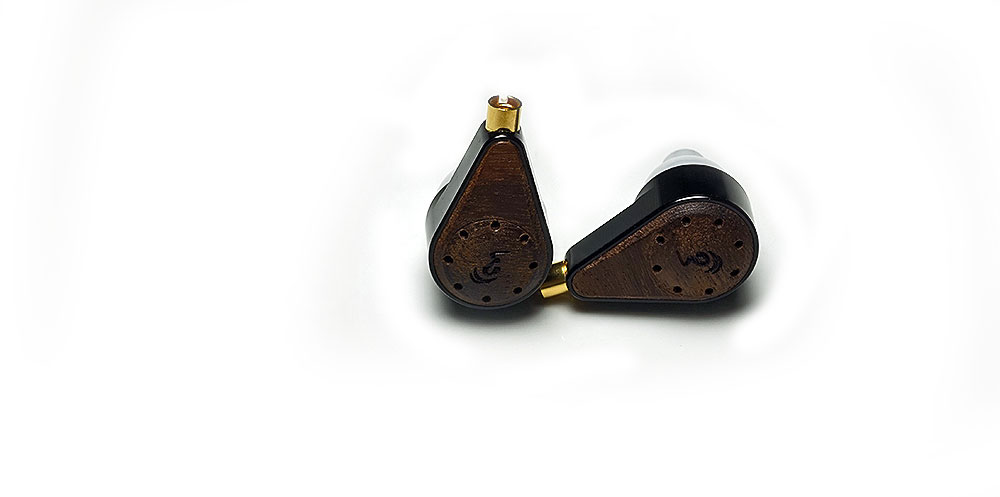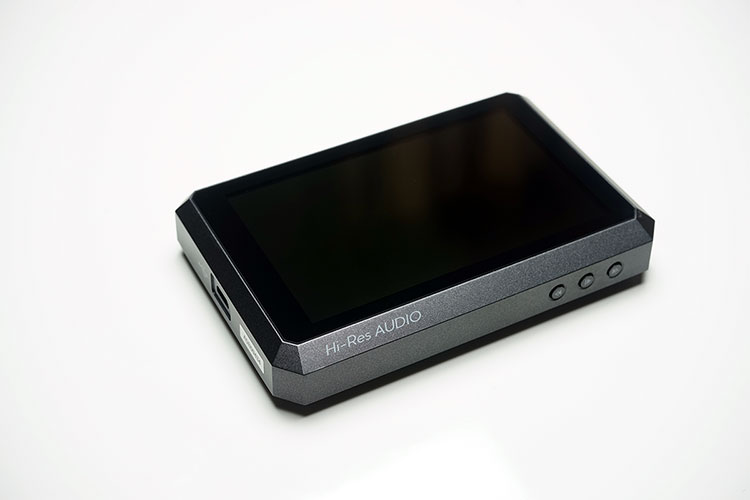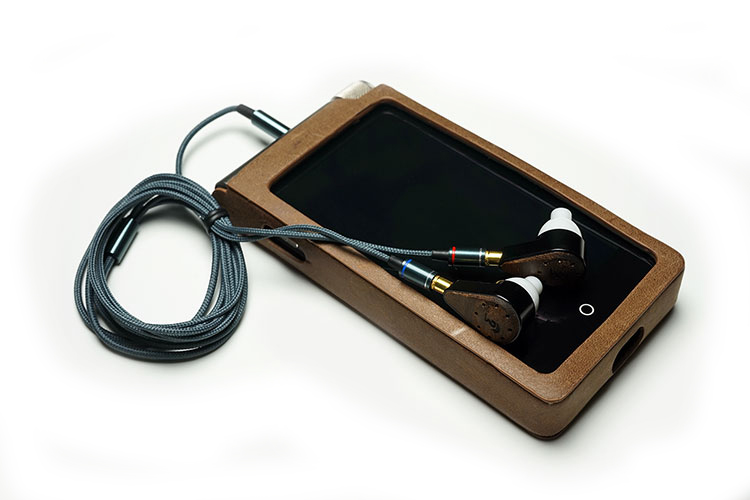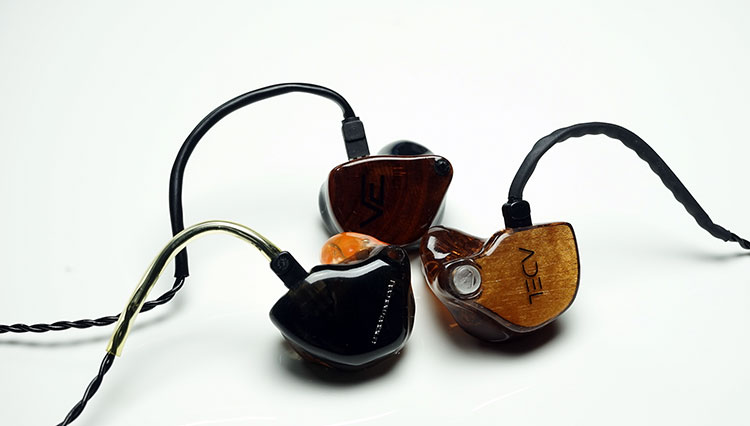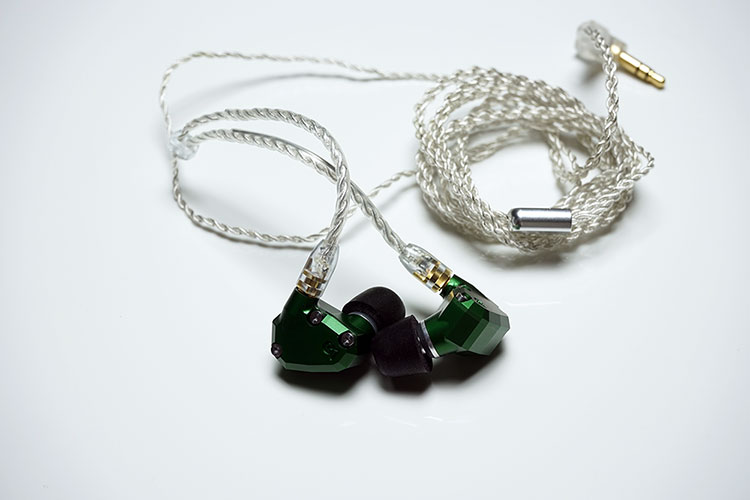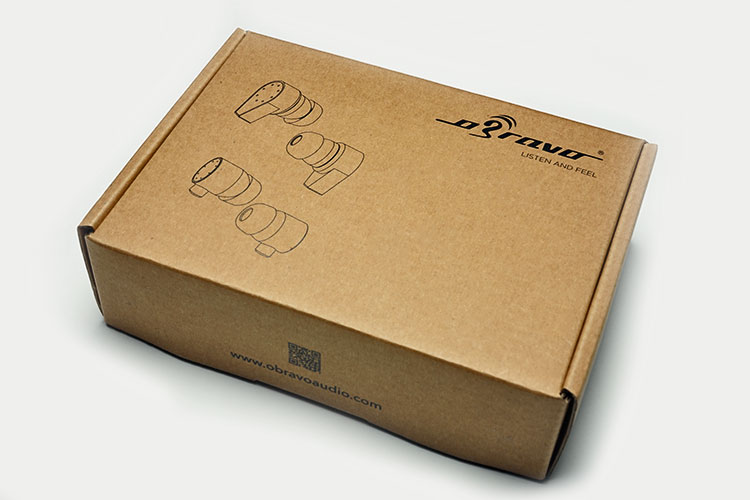EAMT-2c Matchability
ZTE Axon 7
Volume 85-90%
Efficiency
Despite having the weakest amp on selection here I felt the EAMT-2C pairing was the best I have ever heard from the ZTE Axon 7’s AK4490 DAC. It does push the amp to the limit but you can expect a noise-free experience with decent detail and dynamics.
Tonality
The AK4490 DAC is good, musical, and generally very smooth though treble can be a touch sharper than the rest if the pairing results in a lack of power. Whilst the EAMT-2c needs more juice than others and dynamics are not as strong as better powered amps the level of control on the treble from the AMT transducer was phenomenal. Much like everything else tested, the noise was not an issue.
Dynamics
Dynamics were average to good, smooth lush signature with decent balance, beautifully accurate timbre with stunning vocal performance. Excellent balance between attack and decay right throughout the range. The staging was big though lacked a little bit of depth, more due to the Axon 7 amping limits than the EAMT-2A abilities.
Bass was lively but natural-sounding though didn’t have the same level of presence or detail at the lowest levels compared to some higher-powered DAPs and amps. The treble performance was very smooth, lacking in any peaks or unevenness.
Percussion detail was very good, never once came across as splashy, and remained very articulate. Sibilance is zero, and I mean nothing whatsoever.
Genres
It’s a pretty handy pairing for most genres on the go but it won’t give you the full potential of the EAMT-2C.
AK240
Volume (unbalanced 100-110, balanced same )
Efficiency
The EAMT-2c can really scale and does deserve to be paired with a really good DAC and amp. Whilst the AK240 can never be classified as having a top-end amp, its DAC section is excellent with a linear, somewhat bass light signature but with bags of detail. The experience is completely noise-free.
Tonality
The EAMT-2C does take a minor hit in bass performance in terms of quantity but it remains very tight with excellent texture and detail. Staging really opens up with the AK240 as do the vocal presence which gets a significant lift over the likes of the Axon 7’s AK4490.
This is a spacious presentation with top tier separation, a clean timbre, and a vocal presence that totally free of sibilance. Treble is more to the fore than the Axon 7 or the mid-tier DAPs but it is a very smooth treble performance with zero peaks and plenty of articulation.
The headroom on the AK240 is excellent with the EAMT-2C. I have had top tire customs like the VE6XC produces a very good treble performance with the AK240 but the 2C is much slicker and more refined sounding in every way.
Genres
The decay is marginally faster across the board than the AK4490 variants on offer and the attack a touch cleaner but none of it is overly dry or sharp, just simply and wonderfully clean as a whistle. Much like the Paw Gold, this pairing is one for hi-fidelity recordings, acapella, jazz, and roots where the micro-detail can really shine.
Balanced
Balanced mode on the AK240 with the EAMT-2C didn’t produce a seismic shift in quality, dynamics, or gain. If anything, the bass was a touch snappier, slightly better definition and instrumental separation was a little more precise but in reality, the AK240 balanced mode won’t give you a huge edge over its unbalanced output.
Opus#1
Volume (95-100 steps unbalanced, balanced same )
Efficiency
The EAMT-2C was hitting Oppo PM-3 territory for drivability which tells you something about the power needs of this hybrid IEM. On the plus side in unbalanced mode, the presentation was noise-free with a decent black background.
Tonality
This was my least favorite pairing out of all of the DAPs and smartphones using its unbalanced output. The Opus#1 for me is a tricky pairing to get just right as it can often come across as a little boring and flat in comparison to some of its musical peers using its single-ended output. It doesn’t sound bad, technically very good, just a touch lifeless.
Technicality
With the EAMT-2C, the Opus#1 did everything right so to speak, at least on a technical level. The staging was immersive with plenty of headroom and width as well as projecting a very pleasing and natural tonal quality, especially to its vocals.
However, the bass was anemic, even by AK240 standards and it lacks the dynamics and energy of more musical pairings such as the ZX2 and the i5. Treble is a touch soft also and more laid back than the i5 or AK240. In the end, it felt stuck in the middle lane and reduced to slow-paced easy listening that didn’t put any pressure on its low end.
Balanced
Switching to balanced really didn’t make a huge difference, in all honesty, perhaps a touch better dynamics and a little more low-end weight but nothing night and day.
Genres
If you are after a very pleasing vocal performance, then the Opus#1 does ok. If you want a little more clarity, attack, and detail or bigger dynamics then there are better pairings with the EAMT-2.
Sony ZX2
Volume (60-70% low gain, no Clear Audio+ activated, up to 80% for some DSD)
Efficiency
Pleasingly the EAMT-2C was noise-free with a healthy black background on the ZX2 despite requiring above-average levels of power to get going without Clear Audio+ activated. With Clear Audio+ activated you can drop it down by 1-2 steps to compensate for the enhanced bass performance. With DSD you do have to compensate a little more by around 10%.
Tonality (no EQ)
Without Clear Audio+ the ZX2/EAMT-2C is a dark to neutral tonal pairing with decent extension and depth and a clean and very refined vocal performance that’s sibilant free. Attack and decay are excellent on this pairing and detail was top notch. Treble was a touch slower in decay than the AK240.
Tonality (with EQ)
With Clear Audio+ activated the ZX2 really upped the level of dynamics especially the bass performance. If you want something to rival the i5 pairing the ZX2 on ClearAudio+ is it. It’s not the tightest bass, there is a bit of warmth to it. However, it does show how easily the EAMT-2C can spit out volumes of distortion-free bass, keep it from bleeding or drowning out the rest of the frequency performance.
The soundstage on this pairing with Clear Audio+ is impressively deep but not quite as wide engaging as the Paw Gold with the EAMT-2C.
Often with Clear Audio+ vocals take a backstage, not so with the EAMT-2C. They are clean and clear but personally, I find them a little off in the timbre. Vocals sound a touch more natural and more intimate without Clear Audio+ which suits acoustical and jazz recordings a bit more with the EAMT-2C.
FiiO X7/AM3
Volume (78-83 steps low gain unbalanced, 75-78 steps balanced)
Efficiency
The EAMT-2C is blissfully sibilant and noise-free with the X7 pairing. Power-wise it does go a bit higher than most IEMs but it doesn’t need huge dollops of power in unbalanced mode. In balanced mode, it should drop down by 2-3 steps to compensate for the additional power.
Tonality (unbalanced)
In unbalanced mode, the X7/AM3 has that same smooth easy-going tonal presentation of the Opus#1 but with better depth and headroom as well as an edge in clarity. The EAMT-2C pairing did very well indeed with the X7/AM3 pairing and probably my favorite mid-fi pairing.
It is not as musical sounding as the i5, it won’t give you that same low-end heft but it has a lusher smoother midrange and a very coherent and balanced sounding treble performance.
Tonality (Balanced)
In balanced mode, the bass gets a fairly substantial lift as do the dynamics in general and the EAMT-2C can easily cope up displaying no additional noise or hiss. Vocals come slightly further forward. Overall the presentation is more vibrant and aggressive.
If you enjoy a slightly more aggressive and planted profile then definitely go balanced but if you like a slightly smoother tone and slightly more linear bass performance from the EAMT-2C then unbalanced is fine.
Genres
Consider this an offering of two flavors so to speak rather than one being better than the other. Throw your EDM on balanced and jazz on unbalanced.
Cayin i5
Volume (38-43 low gain)
Efficiency
No issues driving the EAMT-2C with a low gain performance in the high 30’s and also noise-free. Much like the Opus#1 though this is an efficient planar territory with similar settings to the Oppo PM-3 and HE400s.
Tonality
This is the pairing for a more dominant low-end performance from the EAMT-2C as well as an enhanced vocal presence. The AK240 has the slightly more controlled and revealing lower midrange and a more articulate and controlled treble signature but the slightly warmer and heavier hitting i5 has a better musicality.
Bass has more solidity and vocals have a slightly warmer sheen. Right across the low to mid-range, the i5 offers a slightly thicker note on the EAMT-2C that is slightly slower in comparison to the AK240 but lends itself better to rock, EDM, and modern pop genres.
Treble on the i5 is a touch slower with a slightly longer decay with the EAMT-2C but it still remains impressively sibilant free. Staging is impressively deep on the i5 but with a more forward vocal presence pulling in the stage slightly compared to the more neutral AK240.
Genres
This is your go-to pairing for modern pop and dance, metal, anything that requires some low-end physicality.
Lotoo Paw Gold
Volume (55-60 steps low gain)
Efficiency
The EAMT-2C needed a bit more juice than what is typically required for IEMs with the Paw Gold but the background is really black and noise-free with this pairing.
Tonality
The Paw Gold returns the EAMT-2C to a more neutral footing but with a touch more warmth and easy-going tonality than the AK240. Bass is toned down compared to the i5 but in return, the midrange is more expansive with excellent instrumental separation and an accurate timbre.
Vocals are powerful, clear, and natural-sounding with this pairing. Treble performance is a bit more relaxed sounding than the AK240 but no less detailed. Staging on the Paw Gold/EAMT-2C is excellent and possibly the best pairing for imaging also. A very vivid and engaging presentation indeed.
Genres
This pairing tonal quality really made its mark with jazz, acoustics, and orchestral works. I just felt the bass performance, much like the AK240 didn’t get the most out of the EAMT-2C for modern pop and dance.
Select Comparisons
(Setup X7/AM3 in balanced mode, Twag v4 balanced on the VE6XC, 64 Audio A12, stock cables on the Andromeda and IE800, IE800 using SNUGS custom tips)
Vision Ears VE6XC
(1899 EUR ) Volume (35-40 steps low gain balanced)
Fit & Seal
Of course, this is universal versus custom so in every way, the VE6XC has a better seal and passive noise isolation. Let’s put that to bed right away. Price-wise the VE6XC is the cheaper of the two but we are talking about both being well over $2000 so it is very much a contextual statement. This is a battle of the flagships in many ways.
Efficiency
The 6 BA setup of the VE6Xc is also way more efficient than the EAMT-2C’s hybrid design sounding comfortable at 50% less volume but it does exhibit more noise on inefficient setups than the very noise-free EAMT-2C. Noise on the X7/AM3 balanced mode was evident, even at moderate volume levels.
Bass
The VE6XC will initially sound the heavier hitting of the two believe it or not but the EAMT-2C has the better sub-bass extension and sounds the more natural of the two, you just don’t get as a big a mid-bass slam as the 6XC can provide. That is saying something, to be honest, as the 6XC is not the bassiest sounding custom, to begin with yet side by side I prefer how the EAMT-2 presents its bass performance which is more coherent, spacious, and better defined.
Staging
Staging wise the VE6XC has plenty of width, more so than the EAMT-2C. Whilst I will bow to that very spacious sound as having no real equal in my collection it can at times be almost too wide without corresponding depth. The EAMT-2C sacrifices a touch of width in comparison and adds plenty of depth to produce what I believe is a more realistic soundstage than the VE6XC.
Treble
The EAMT-2C kills the 6XC for top-end extension and clarity. I mean the 6XC always sounded great to me with a nice natural balance but it sounded a touch dull when compared to the brilliance of the EAMT-2C’s AMT transducer. What is more, the vocal clarity and breathtaking control of the EAMT-2C for all types of vocals makes the 6XC sound grainy, one dimensional in comparison, and almost subdued sounding.
Compared to most other regular IEM’s the 6XC treble I have classed many times as being slightly forward but compared to the EAMT-2C is actually sounds shelved down. That doesn’t mean the AMT transducer is bright, not in the slightest, it’s simply much cleaner, more detailed, and much more articulate with way better extension.
64Audio A12
($1999.00) Volume 38-42 steps
Efficiency
Much like the VE6XC, the custom A12 is far more efficient than the EAMT-2C taking about 50% or less volume in comparison. It also exhibits a bit more noise on inefficient or higher gain setups such as the balanced AM3 mode via the FiiO X7. As I write this is still the current flagship of 64 Audio.
Bass
Tonally the A12 has a slightly warmer and smoother presentation than the EAMT-2A with a heavier and more planted bass performance overall than either the VE6XC and the EAMT-2C. Of the three big hitters, the A12 is the most solid sounding of the three.
Bass extension on the EAMT-2C though is better in terms of definition and pace with a superior sub-bass performance over the BA designed A12. Of the three, the EAMT-2C still has the most natural and deepest sounding extension with that NND driver. The A12 sounds the slowest of the three in comparison but with texture and detail wise it is more authoritative-sounding than the 6XC.
Mids
Mids on the A12 are a bit more relaxed and thicker sounding compared to the more spacious and accurate sounding EAMT-2C. It sounds slightly veiled in comparison and lacking in dynamics. On their own, I have always considered the A12 to sound open and spacious with excellent vocal control but it cannot hold a candle to the airier EAMT-2C’s superior instrumental separation and detail.
Vocals on the EAMT-2C are cleaner, more accurate, and way more resolving. The A12 has pulled back a bit on the vocals, perhaps to prevent sibilance creeping in. The AMT transducer on the EAMT-2C needs no such compromise. Clean as a whistle and impeccably controlled with bags of detail.
Treble
Treble on the A12 is nonexistent compared to the headroom the more open and articulate EAMT-2C can achieve. I spoke about the 6XC sounding almost shelved down compared to the EAMT-2C well the A12 is even more suppressed sounding.
The headroom is tiny in comparison and whilst the A12 is smooth and sibilant free it does so at the cost of clarity and sparkle. The 2C can give all that and still sound sibilant and 100% coherent. That is impressive indeed.
CA Andromeda
($1099) Volume 30-35 steps
Efficiency
The most efficient universal IEM in my arsenal and one of the most efficient IEMs period. Volume is less than 50% of the EAMT-2C, it really requires so little power to get moving in comparison. It does also ruthlessly show up any hiss on efficient or noisy systems, unlike the more power-hungry EAMT-2C.
Fit & Seal
Both are sturdy and reasonably robust IEMs though the Andromeda is the slightly smaller of the two and easier to fit over the ear than the big stalked EAMT-2C. Both use foam tips so the seal is on par however the vented plates of the EAMT-2C make the Andromeda much better at passive noise isolation.
Bass
At the $1000 price range, only the Fidue a91 is the equal of the Andromeda overall though the Andromeda has the better treble extension and meatier cleaner sound. In comparison, the more open sounding EAMT-2C has a leaner bass profile though its depth and sub-bass performance is on par if not better in terms of pace, definition, and layering.
If you want something a little meatier than the Andromeda might be more suitable in that respect.
Mids
That airy open staging quality of the EAMT-2C is a continuing theme right throughout the midrange and makes the Andromeda sound relatively dark and closed in comparison. Of no doubt, the Andromeda vocals are superb in terms of control and detail but they far less natural sounding than the EAMT-2C which positively soared without a duff note insight.
Yes, they are slightly more forward sounding but the energy and clarity are a class above the Andromeda and incredibly sibilant free.
Treble
Treble is the Andromeda strong point. Campfire Audio’s resonating chamber technology really brings out excellent extension and detail without a hint of peakiness throughout.
Yet in comparison to the AMT transducer technology, the Andromeda does not sound as natural or as airy as the EAMT-2C. Extension on both are great, articulation on both are great, but the sparkle, air, and clarity are with the EAMT-2C. It is just so much more resolving than could ever hope to imagine from a universal IEM.
IE800
($799) (Volume 60-65 steps)
Efficiency
The IE800’s single dynamic driver setup is less efficient compared to the custom BA setups but more efficient than the EAMT-2C by around 10-13 steps in low gain on the AM3/X7 setup. Noise is low to nonexistent compared to the BA designs and is on the same level as the EAMT-2C in that respect.
Fit & Seal
Both have more open fitting being universal with the IE800’s proprietary tip proving to be a pain in the ass for a sweet spot. Using custom tips makes a huge difference to the comfort and seal of the IE800 but these do cost up to $150 extra. Still, a drop in the ocean compared to the $3000 entry price of the EAMT-2C.
Treble
Tonally the IE800 is similarly detail orientated to the EAMT-2C but is thinner sounding overall with a far more temperamental treble performance.
Whereas the EAMT-2C and the IE800 have great extension and articulation the IE800 is glassy and brittle in comparison to the more assured and smoother sounding EAMT-2C. It is a huge difference and makes the IE800 sound slightly unnatural and small sounding in comparison.
Mids
Mids on the EAMT-2C are far more expansive and solid sounding with a more natural and slightly more forward vocal presence that performs equally well with male and female vocals. The IE800 in comparison has a slightly more recessed vocal presence and a touch more sibilance but not a huge amount overall.
Actually, the IE800’s midrange is the cleanest and most controlled of the competition but it doesn’t have the dynamics of the EAMT-2C nor does it have the same level of texture and detail.
Bass
The IE800’s bass performance is excellent in its own right. Deep, plentiful, and meaty, but lacks the air and layering of the EAMT-2C’s bass performance. In comparison, the 2C is just that bit snappier with a better body and is a few dB higher in its sub-bass presence over the IE800.
Soundstage
Staging wise the IE800 is not as coherent sounding as the EAMT-2C. Yes, it’s big, the imaging is excellent but the coloration in the low end combined with the more brittle lower treble keeps it more off-balance in comparison to the far more coherent and natural-sounding EAMT-2C.
Our Verdict
The EAMT-2C is the first universal IEM I have reviewed that will receive a score of over 9. It will take home the honors for the best tonality I have heard to date from an in-ear monitor as well as being one of the most matchable and likable sound signatures across the widest range of sources at my current disposal.
For the longest time, I have been a strong advocate of custom monitors as simply being the best, and whilst fit and seal on a custom can never be beaten I highly doubt I have yet to hear a signature that can be as open sounding and refined as the EAMT-2C. Yes, it is that good.
Caution
I am always careful in giving out praise in this manner simply because there will always be something that comes along in the future that will knock it off its perch and I am sure oBravo will or does have something like that in mind.
I am mindful also of the subjective bias we all have in preferring one signature over another but I do genuinely believe that given the opportunity to listen to the EAMT-2C side by side with any other flagship IEM most people will point to the EAMT-2C as having the more lifelike and engaging signature.
Can it get better? Perhaps a little bump in sub-bass quantity might just do the trick, perhaps not, it is hard to tell. Certainly, it is not a bass head IEM and honestly, I am not sure I would want it to go down that direction. Stax users will understand that feeling.
Obravo Audio EAMT-2c Technical Specifications
- Frequency Response: 18Hz~45KHz
- Tweeter: 8mm Air Motion Transformer Tweeter
- Dynamic Driver: 12mm Neodymium Driver
- Impedance: 16 ohm
- Sensibility in dB: 105dB
- Weight: 35 g

